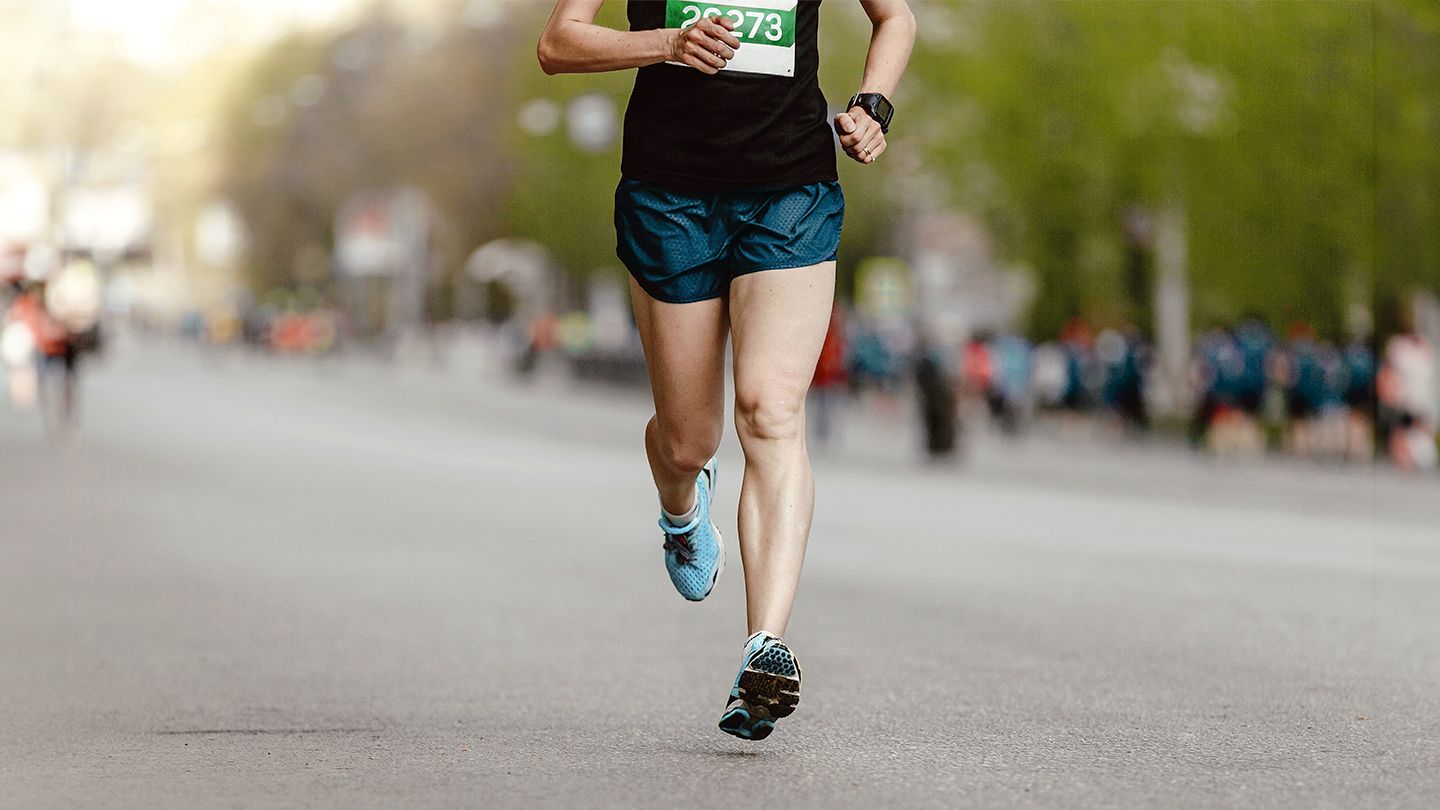It’s the starting line for your first — or maybe tenth — marathon. You’ve got at least six months of consistent training under your belt, and you’ve managed to run 20 miles at least a couple of times. Your body knows what it’s like to run for several hours, and so does your brain.
But what exactly does your body go through once the starting gun fires? Here’s a mile-by-mile breakdown of what happens when you run a marathon.
The excitement of a crowd means most runners start fast. That’s a problem, says Siobhan M. Statuta, MD, a sports medicine primary care specialist at UVA Family Medicine in Charlottesville, Virginia, because you’ll end up burning through your body’s energy stores earlier and fatiguing faster. Not great when you still have (gulp) more than 20 miles to go. “Slow and steady gets the job done,” Dr. Statuta says.
Unlike shorter running events (like a 5K, or 3.1 miles), where you don’t have to worry much about food or water, longer distances mean increased sweat and a greater calorie burn because you’re out there longer, according to Mark A. Harrast, MD, a sports medicine physician at UW Medicine and medical director of the Sports Medicine Center at Husky Stadium in Seattle, Washington.
A typical runner needs between 15 ounces (for a smaller runner) and 30 ounces (for a larger runner) of fluid every hour, Dr. Harrast says. To get a more precise measurement of how much water you need, weigh yourself before and after an hour-long training run to see how much fluid you lost.
As far as food, you’ll want to start taking in calories in the form of simple carbohydrates after an hour to an hour-and-a-half of running, Statuta says. Simple carbs are sugars that break down quickly in the body, rapidly providing you with fuel in the form of glucose, per the Cleveland Clinic. Energy bars, energy gels, crackers, and pretzels all qualify as simple carbs.
The miles are flying by until your stomach starts to cramp — ouch!
Research suggests that between 30 and 50 percent of distance runners experience gastrointestinal (GI) distress.[1] There are two main theories for why that’s the case, Harrast says. The first is purely mechanical: Your gut jostles with every stride, irritating it until a bathroom break is required. The second is that blood gets diverted from our organs and sent to our muscles, interrupting the digestive process and leading to cramping, diarrhea, acid reflux, and/or nausea.
Specific foods may cause digestive upset in runners, too, Statuta says, so experiment during training to find what bothers your stomach the least. Still, there’s no promise your gut will behave. GI distress can happen at any time on a course, Statuta says, including before you cross the starting line (due to race-day jitters).
An hour into the race is a good time to introduce a sports drink. Sports drinks contain water, vitamins, and electrolytes, which are minerals that maintain fluid balance and spark muscle contractions in your body. According to the Cleveland Clinic, you lose electrolytes — including sodium, calcium, and potassium — when you sweat. Sports drinks may support athletic performance by replacing lost fluids and electrolytes.
Statuta and Harrast recommend sipping a sports drink and water throughout the race. Alternate between the two to avoid hyponatremia, a potentially serious condition in which you become overhydrated and your sodium drops below healthy levels. According to a review, 7 to 15 percent of marathon runners develop hyponatremia, which carries symptoms like nausea, vomiting, confusion, muscle cramps, seizures, and even coma.[3]
Things are going great, and then suddenly your legs turn to lead. Each step feels like running uphill. You’ve hit “the wall,” as runners like to call it. Some argue that the wall occurs when you deplete your glycogen stores (glycogen is the stored form of carbohydrates), while others, like Statuta, suggest that your body just moves slower as you fatigue.
There’s also a mental factor to consider. This is likely the farthest distance you went in training, you’ve still got miles to go, and your brain is screaming, “Why are we still doing this?!”
If you do hit the wall, one small study in competitive athletes suggests that taking in more carbohydrates may help.[4] Also, try distraction or positive self-talk to power through. And by mile 23 or 24, the roar of the crowd should help put some pep back in your step.
Source: everydayhealth




















